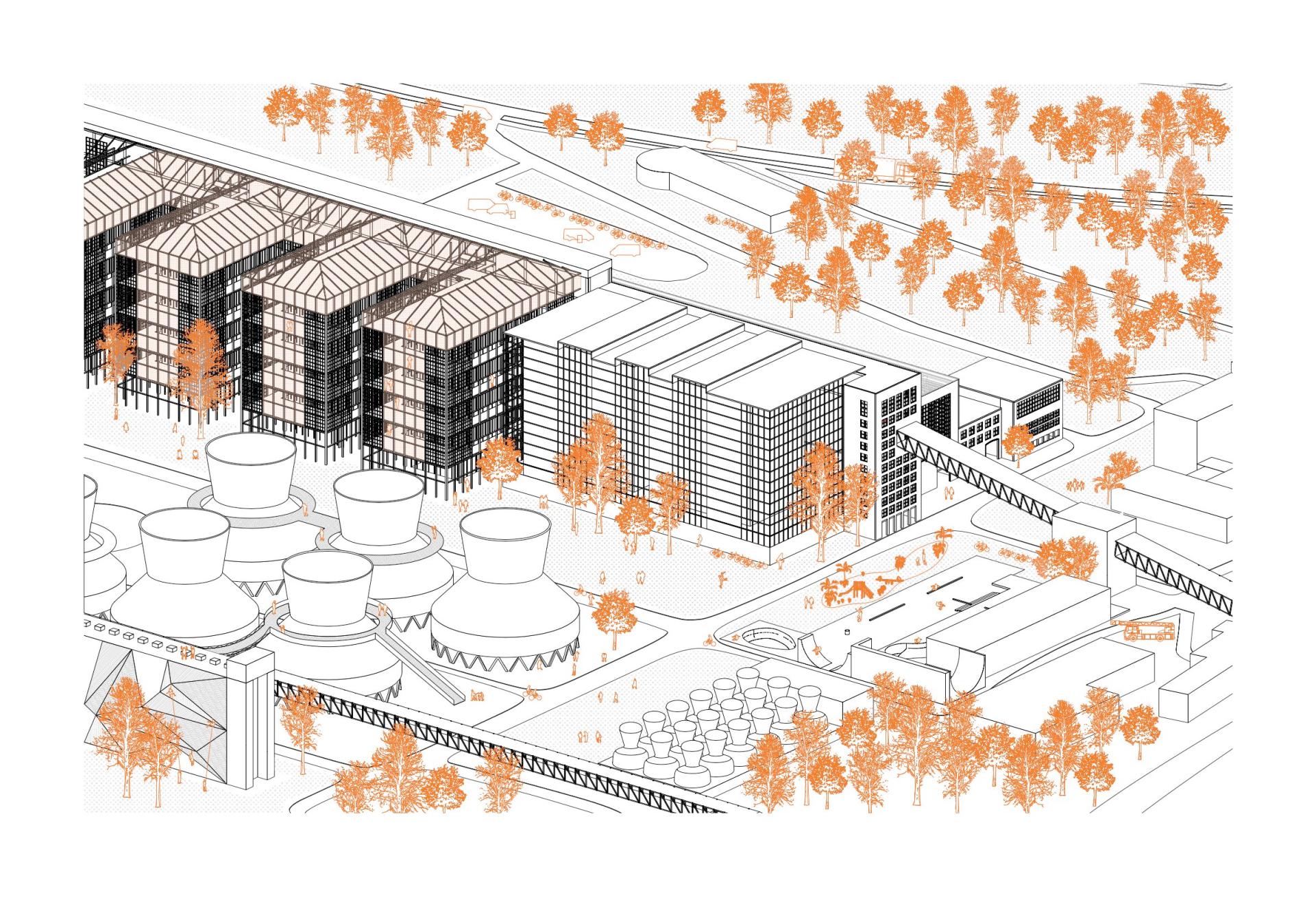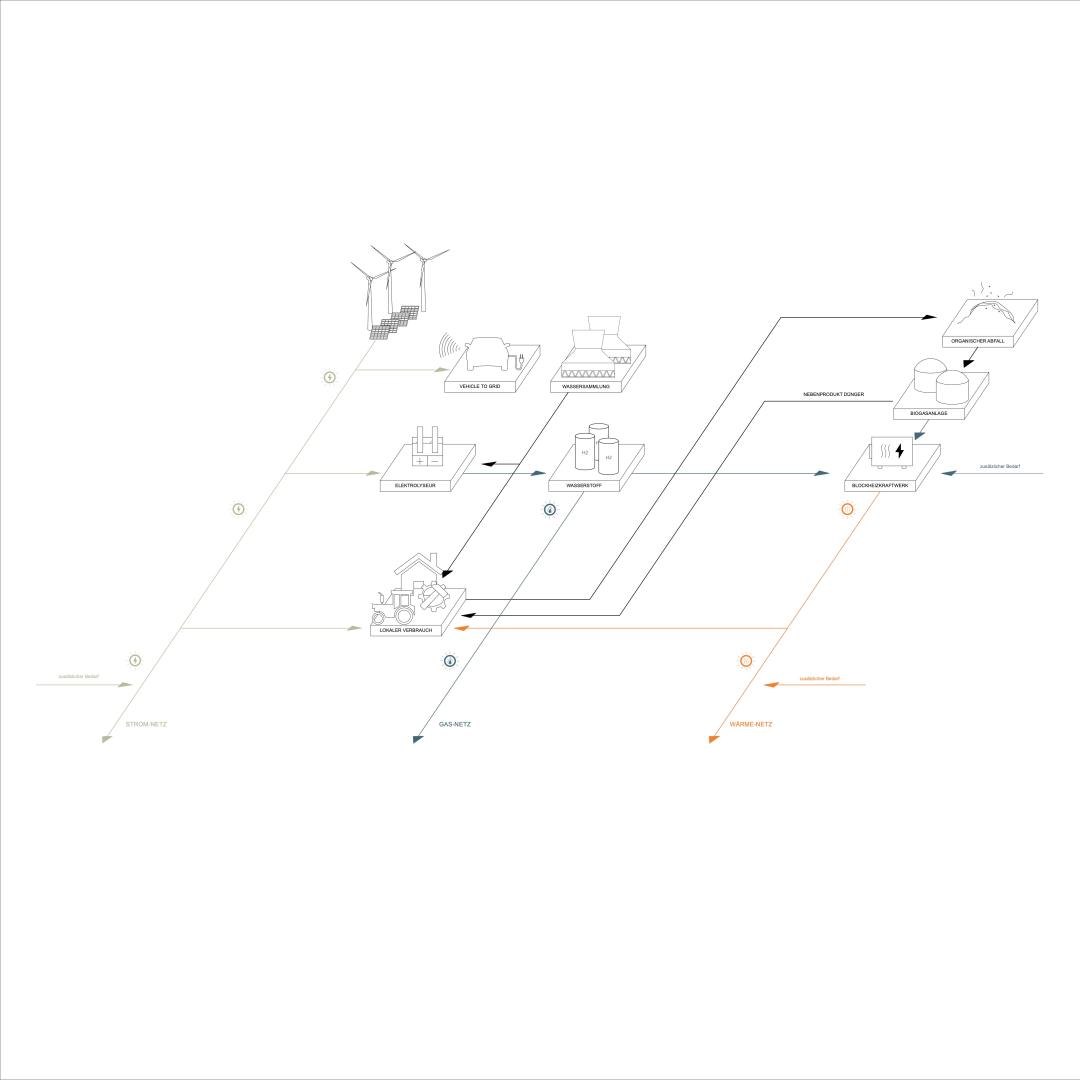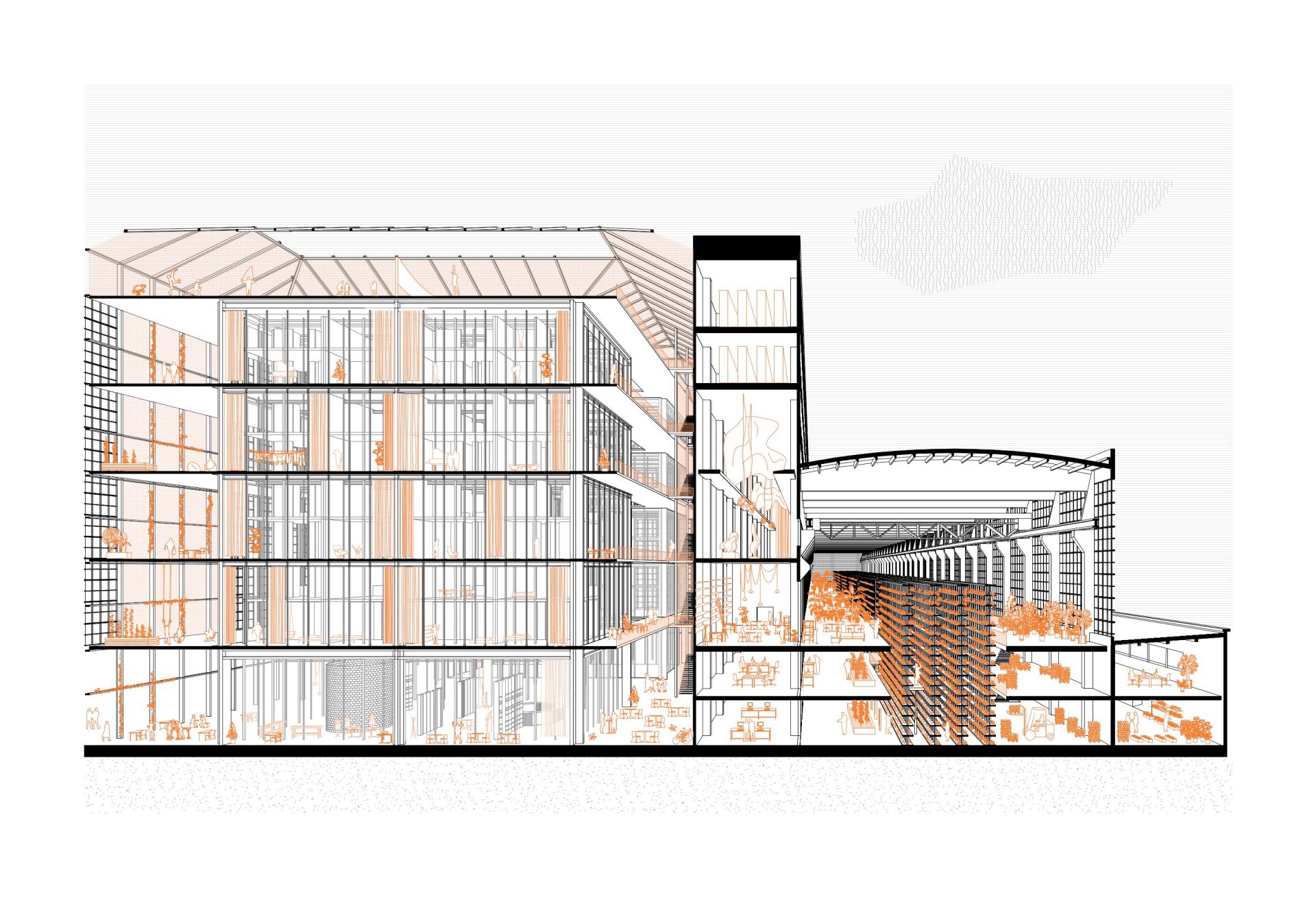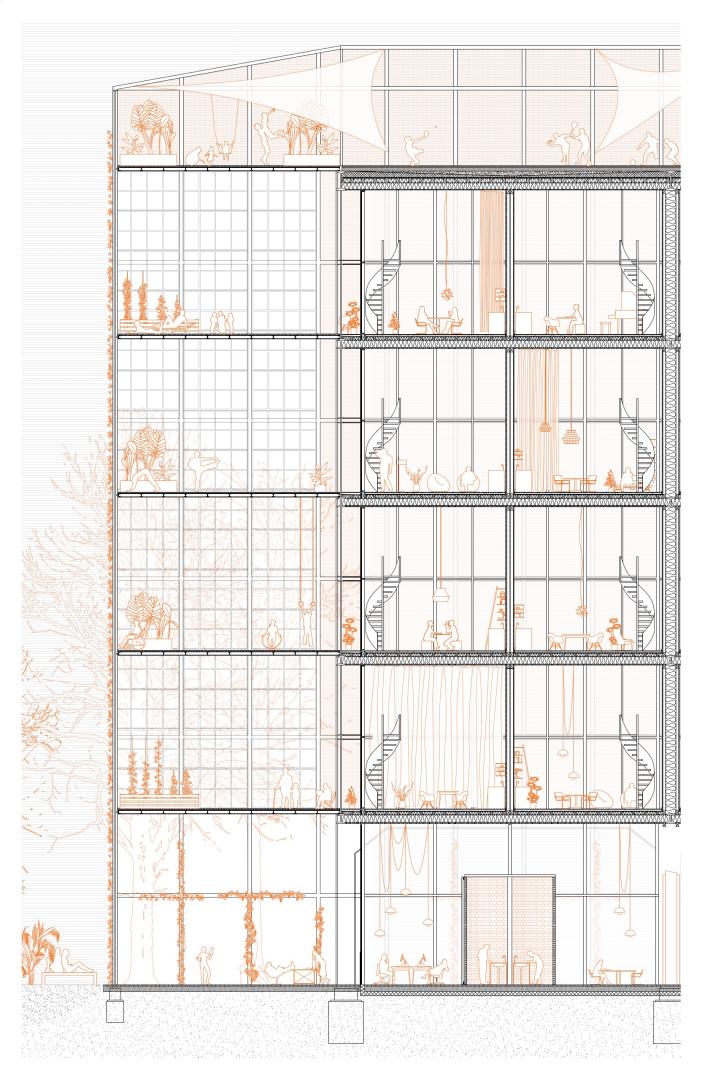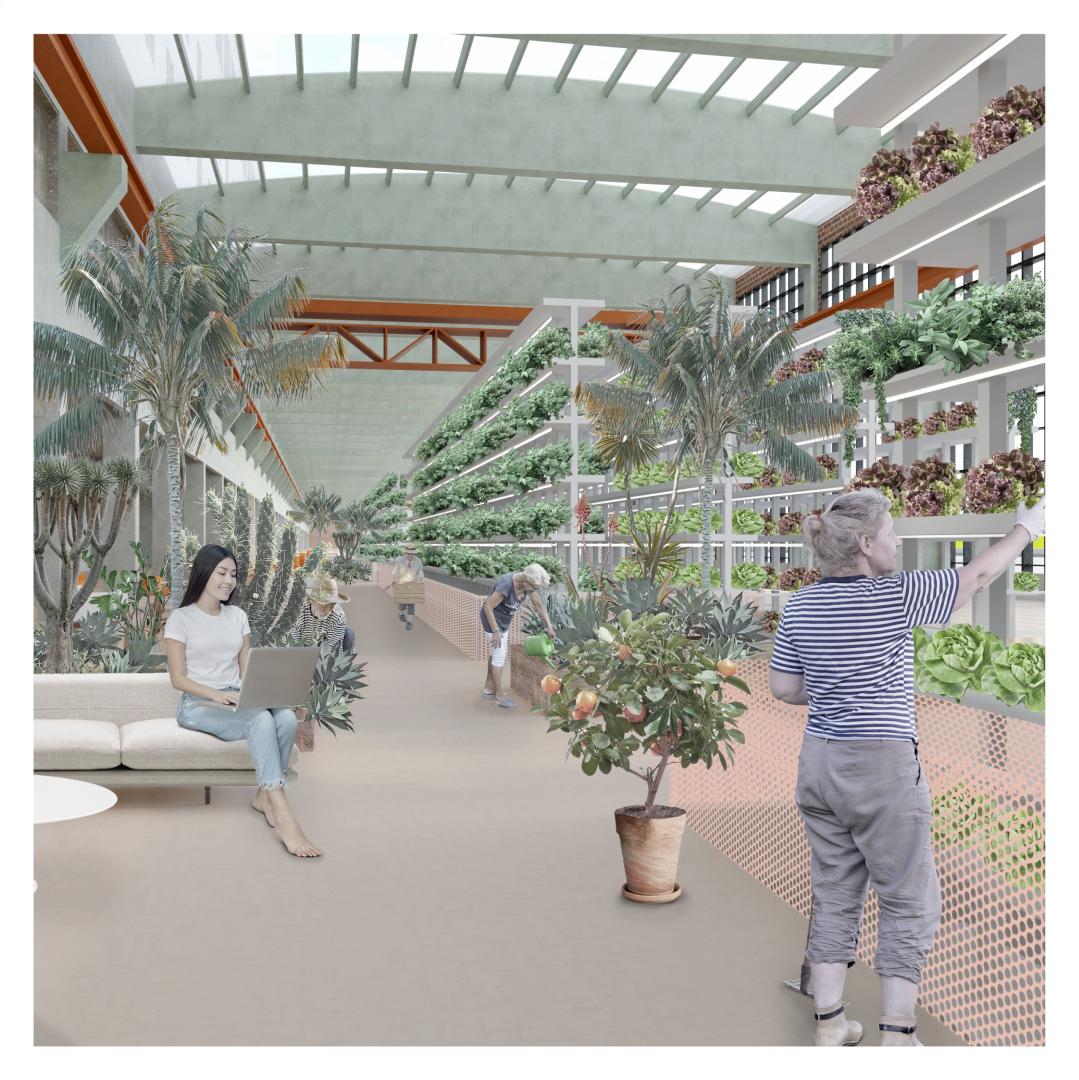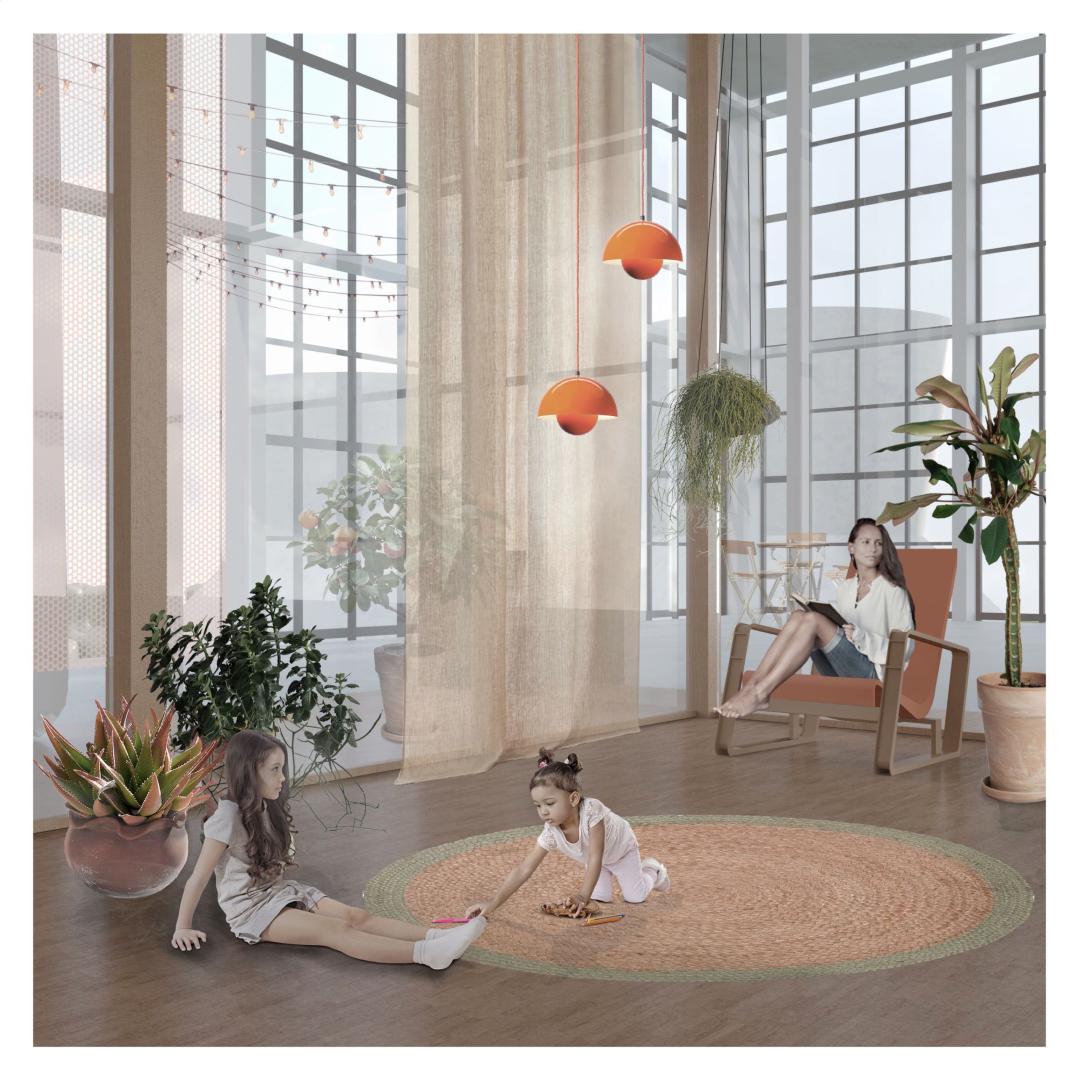Coal Spinner
Basic information
Project Title
Full project title
Category
Project Description
The aim is the holistic networking of electricity, heat, production, food and living inform a climate-positive power plant settlement and in the sense of interbeing with nature. The power plant remains as the central supply center of man. Through novel living and working concepts, the common path to a climate-friendly future will be taken. The industry of the future is no longer climate-damaging, but resilient and sustainable.
Geographical Scope
Project Region
Urban or rural issues
Physical or other transformations
EU Programme or fund
Which funds
Description of the project
Summary
With the coal phase-out, more than 13,000 power plant units worldwide will become obsolete. The finite nature of resources makes us think of the world in cycles. Architectures are huge mines of raw materials, power plants of high architectural-cultural value. In order to safeguard remaining natural resources, the continued use of existing infrastructures to conserve open space is inevitable. The industry of the future is no longer climate-damaging, but resilient and sustainable. The aim is the holistic interconnection of electricity, heat, production, food and living inform a climate-positive power plant settlement and in the sense of interbeing with nature and humans as a part of it. The power plant remains as the central supply center. Through new concepts of living and working, the common path to a climate-friendly future will be taken.
Key objectives for sustainability
The construction sector is responsible for 40% of global greenhouse gas emissions and almost 90% of waste generation. It is also a huge consumer of mineral resources. If behavior remains unchanged, the limits will soon be reached, and if the gray energy already used is included in the overall balance of the building sector, it is urgently necessary to think primarily in terms of existing buildings and to convert them if possible.
Climate settlement coal smelter means the creation of new habitats combined with the function of a power plant, industrial production and resilient agriculture. Through networking, the different areas can complement each other optimally and benefit from each other in terms of a functioning circular economy. In addition, the renaturation of vast natural areas is a central aspect, as the destroyed spaces are carefully returned to nature and actively supported in their healing.
The concept of interbeing, coined by the Buddhist monk Thích Nhat Hanh, describes the ideal of a human being living in harmony with nature. All processes and living beings are interwoven, nothing functions in isolation, there is no competition but only cooperation. In relation to our age, regaining a connection with nature is the basis of humanity's survival. Due to the climate crisis, people are constantly moving in numbers, data and facts, invoking models and making forecasts. While these are frightening, they rarely lead to awareness of the concrete impact on all life. Reducing greenhouse gases in the atmosphere, massive reforestation, changes in agriculture, and new energy production systems are definitely part of the solution, but in the absence of awareness of a healthy planet, planetary boundaries will always be encountered, and every person's choices contribute something to the Earth system as part of the community. Human dependence is already reflected in the economic importance of gratuitous natural processes. These include, among others, the natural
Key objectives for aesthetics and quality
A place is created for people and nature, for industry and agriculture, a supra-regional meeting place, a settlement in which topics such as the climate crisis and its most diverse actors can exchange ideas and educate themselves. All vital supply infrastructure - energy production, food cultivation, living space, community areas and nature - is located on site in the settlement.
Living takes place in the former boiler house, with the old steel scaffolding serving as a frame for a new wooden structure inside with a height of about 45 meters. Staircases are already in place for boiler maintenance, as are circumferential levels for access. The clash of old industrial culture and new living space becomes an exciting game through materials. Old heavy mineral components such as steel girders, metal stairs and concrete ceilings meet warm organic wood and soft textiles and thus merge into a modern yet traditional architecture.
Key objectives for inclusion
So far, people in coal regions have experienced a lot of suffering. Despite economic strength and the creation of many jobs, people lost their living space due to coal mining and natural areas were severely damaged. Air pollution and high levels of pollutants in water bodies, as well as heavy cloud formation and high emissions from the power plants, put a great strain on the villages around the opencast mines and power plants. In the design, the once sealed-off power plant is to become the new connecting element between the villages of Frimmersdorf, Gindorf and Neurath. The old train station will be reactivated, so that the surrounding area will also benefit from the conversion through new connections. Public uses such as a market street selling locally produced products, a skate park and other uses such as a climate protection center invite the community. Gastronomy and small craft businesses, as well as public workshops, also invite people to actively participate in the area and help shape it.
In general, housing in particular is thought to be very inclusive, with units of various sizes, the possibility of barrier-free access, and thus flexibility of use for different age groups. The goal is to create spaces that promote togetherness among residents through adaptability.
Physical or other transformations
Innovative character
The Corona pandemic put housing to the test as a result of social isolation and exit restrictions, especially in urban zones. For many, nature became the most important equalizer, and communal forms of living together were in high demand. Space and freedom in the private sphere became scarce commodities. With the loss of ecosystems, the habitat of animal species is equally lost. As a result, humans and animals meet in the same habitat, with competition for dwindling resources. As the climate crisis progresses, the likelihood of pandemic events increases. Large parts of the world become uninhabitable due to natural events and sea level rise. Extreme weather events will also become more frequent in northern latitudes, further exacerbating the lack of habitat. The result will be global refugee movements, which will be absorbed primarily in the global North and in the industrialized countries.
A rethinking of current lifestyles toward a climate- and socially compatible system is urgently needed. Reduce private space, expand communal areas; Living in a collective brings many advantages. The interconnectedness of work, life, and leisure is forward-looking, with a primary focus on sustainability and flexibility. The design is for an open, inclusive and changeable society.
The design consists of the three components of environmental sustainability, aesthetics and functionality, and inclusion and community. True sustainability is only possible if it is usable, socially just, durable, resilient, and beautiful to look at. Because that's the only way to design concepts that will last for decades.

